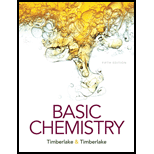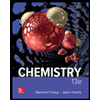
Concept explainers
(a)
Interpretation:
The base sequence in a complementary DNA segment should be written for
Concept Introduction:
There are mainly two types of
(b)
Interpretation:
The base sequence in a complementary DNA segment should be written for
Concept Introduction:
There are mainly two types of nucleic acids that are present in human body known as DNA (deoxyribonucleic acid) and RNA (ribonucleic acid). Both of them are the polymers of repeating monomer units called as nucleotides. Complimentary base pairing is used to describe the manner by which the nitrogenous bases in a DNA molecule align with each other. They are also responsible for the double-helix structure of DNA molecule.
(c)
Interpretation:
The base sequence in a complementary DNA segment should be written for
Concept Introduction:
There are mainly two types of nucleic acids that are present in human body known as DNA (deoxyribonucleic acid) and RNA (ribonucleic acid). Both of them are the polymers of repeating monomer units called as nucleotides. Complimentary base pairing is used to describe the manner by which the nitrogenous bases in a DNA molecule align with each other. They are also responsible for the double-helix structure of DNA molecule.
(d)
Interpretation:
The base sequence in a complementary DNA segment should be written for
Concept Introduction:
There are mainly two types of nucleic acids that are present in human body known as DNA (deoxyribonucleic acid) and RNA (ribonucleic acid). Both of them are the polymers of repeating monomer units called as nucleotides. Complimentary base pairing is used to describe the manner by which the nitrogenous bases in a DNA molecule align with each other. They are also responsible for the double-helix structure of DNA molecule.
Want to see the full answer?
Check out a sample textbook solution
Chapter 18 Solutions
Basic Chemistry (5th Edition)
- Put the following carbon radicals in order of increasing stability.arrow_forwardDraw the major organic product for each of the following reactions (pay attention to stereochemistry).arrow_forwardThere are 2 reactions (that you know of) to achieve the following transformation: One reaction is favored over the other because it avoids a competing reaction. A. Draw the favored reaction scheme (not the mechanism), be sure to include all necessary reagents. B. Draw the reaction scheme that is not favored and include all the possible products.arrow_forward
- Both carbocations and carbon-radicals have trigonal planar geometry. True or Falsearrow_forwardTeflon (polytetrafluoroethene) is prepared via the radial polymerization of tetrafluoroethene. What other reaction conditions (reagent, etc.) are needed to accomplish this? A. NBS, Light B. Heat, Cl2 C. Peroxide, Heat D. H2SO4, H2O, Heatarrow_forwardWhich of the following compounds can be reacted with ethene to prepare 1,1- dichlorocyclopropane? A. CCl4 B. CCl2 C. CHCl3 D. CH2Cl2arrow_forward
- CI 4. How are the products of the following reaction related? (assuming we can control the chlorination as given by the reaction) C Cl2, light A. Enantiomers B. Constitutional isomers C. Regioisomers D. Diastereomers C +arrow_forwardVinyl and allyl radicals are equally stable due to resonance stabilization True OR Falsearrow_forwardAll of the following are true of Markovnikov’s rule EXCEPT A. The nucleophile adds to the most substituted carbon B. The more stable carbocation is formed in the transition state C. The electrophile adds to the carbon that has the most hydrogens D. There are no exceptions to this rulearrow_forward
 ChemistryChemistryISBN:9781305957404Author:Steven S. Zumdahl, Susan A. Zumdahl, Donald J. DeCostePublisher:Cengage Learning
ChemistryChemistryISBN:9781305957404Author:Steven S. Zumdahl, Susan A. Zumdahl, Donald J. DeCostePublisher:Cengage Learning ChemistryChemistryISBN:9781259911156Author:Raymond Chang Dr., Jason Overby ProfessorPublisher:McGraw-Hill Education
ChemistryChemistryISBN:9781259911156Author:Raymond Chang Dr., Jason Overby ProfessorPublisher:McGraw-Hill Education Principles of Instrumental AnalysisChemistryISBN:9781305577213Author:Douglas A. Skoog, F. James Holler, Stanley R. CrouchPublisher:Cengage Learning
Principles of Instrumental AnalysisChemistryISBN:9781305577213Author:Douglas A. Skoog, F. James Holler, Stanley R. CrouchPublisher:Cengage Learning Organic ChemistryChemistryISBN:9780078021558Author:Janice Gorzynski Smith Dr.Publisher:McGraw-Hill Education
Organic ChemistryChemistryISBN:9780078021558Author:Janice Gorzynski Smith Dr.Publisher:McGraw-Hill Education Chemistry: Principles and ReactionsChemistryISBN:9781305079373Author:William L. Masterton, Cecile N. HurleyPublisher:Cengage Learning
Chemistry: Principles and ReactionsChemistryISBN:9781305079373Author:William L. Masterton, Cecile N. HurleyPublisher:Cengage Learning Elementary Principles of Chemical Processes, Bind...ChemistryISBN:9781118431221Author:Richard M. Felder, Ronald W. Rousseau, Lisa G. BullardPublisher:WILEY
Elementary Principles of Chemical Processes, Bind...ChemistryISBN:9781118431221Author:Richard M. Felder, Ronald W. Rousseau, Lisa G. BullardPublisher:WILEY





